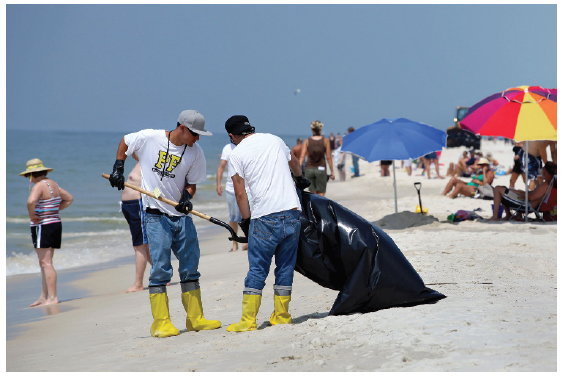1. Use information contained in the case to compare and contrast publicity, public relations, and advertising. 2....
Question:
2. In October 2010, an American, Bob Dudley, replaced Tony Hayward as chief executive of BP. Does this change in leadership surprise you?
3. As noted in the case, PR professionals offered differing views of the effectiveness of BP€™s public relations strategy. Do you agree with Howard Rubenstein€™s assessment, or Eric Dezenhall€™s?
4. Do you think BP€™s advertising campaign highlighting the number of alleged fraudulent damage claims was the right response?
Executives at BP, the British oil company, have faced unprecedented challenges during the past several years. A catastrophic explosion on the Deepwater Horizon oil-drilling platform in the Gulf of Mexico in April 2010 killed 11 workers and resulted in millions of gallons of oil spilling into the waters off the Louisiana coast. Initial efforts to stop the leak failed. As an estimated 30,000 barrels of oil leaked from the stricken well each day, Deepwater Horizon became the worst oil spill in U.S. history, surpassing the 1989 Exxon Valdez accident in Alaska. As one newspaper declared in mid-2010, €œBP has become public enemy number-one in the U.S.€
Prior to the accident, BP, which was once known as British Petroleum, was the leading producer of gas and oil in the United States. Forty percent of its shareholders were in the United States. Ironically, in 2000, BP implemented an ecology-themed corporate identity campaign keyed to the theme €œBeyond Petroleum.€ As the disaster unfolded, oil-contaminated oyster beds and fishing grounds threatened the livelihoods of thousands of fishermen. Images of oilsoaked, brown pelicans were widely circulated by the media. As tar balls began to wash up on beaches, hotel owners in Alabama, Florida, Louisiana, and Mississippi worried about the prospect of fewer tourists (see Exhibit 13-8).
The CEO€™s Missteps While engineers worked around the clock to plug the leak, BP tried to reassure the public that it was doing everything possible. Full-page print ads declared, €œWe will get it done. We will make this right.€ Even so, critics pounced on early comments by BP CEO Tony Hayward suggesting that the environmental impact of the spill would likely be €œvery, very modest.€
As the crisis continued into the summer of 2010, the rhetoric on both sides of the Atlantic escalated. U.S. President Barack Obama declared that he wanted to find out €œwhose ass to kick.€ In a televised address from the Oval Office, President Obama asserted that he would hold BP accountable. BP€™s board of directors canceled the company€™s dividend and voluntarily created a $20 billion fund to aid those impacted by the spill. The blown-out well was finally capped on July 15, 2010.
BP chief executive Tony Hayward became a lightning rod for America€™s anger and frustration about the spill. At times, Hayward appeared in public in pinstriped suits; his attire was in stark contrast to the overalls worn by shrimp-boat operators and others whose livelihoods were threatened by the spill. Some of Hayward€™s public statements also struck observers as insensitive. For example, The Guardian, a British newspaper, quoted him as saying, €œThe Gulf of Mexico is a very big ocean. The amount of oil and the volume of dispersant we are putting into it is tiny in relation to the total water volume.€ Critics also pilloried Hayward for two other statements he made during a television interview: €œThere€™s no one who wants this thing over more than I do,€ he said. €œI want my life back.€
Some industry observers wondered whether the rhetoric directed against BP was motivated in part by the perception that the company is British. Spokepersons at global companies should be able to speak to and understand the various markets in which they have operations. As brand consultant Wally Olins noted, the BP disaster €œshows you need people at, or near, the top of the business who can speak the language and use the style of the countries in which they operate.€ In this regard, many observers agreed that both BP and Hayward himself came up short.
Exhibit 13-8

A dividend is a distribution of a portion of company’s earnings, decided and managed by the company’s board of directors, and paid to the shareholders. Dividends are given on the shares. It is a token reward paid to the shareholders for their...
Step by Step Answer:






